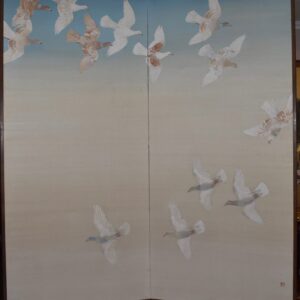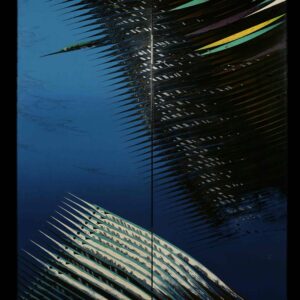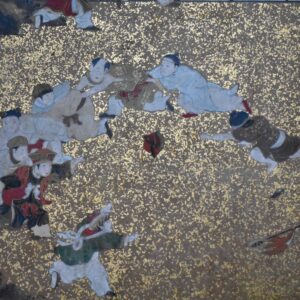This fabulous screen shows the best of the Unkoku school. The anonymous artist must have been well versed in Chinese ink painting with its subdued palette and delicate outlines. This is especially well visible in the parts of the stream and mountains emerging from clouds in the far distance. All this was juxtaposed with a local splash of colours and the Japanese love of gold. Worthy of note is the realism of the plants and birds contrasted with large areas of the painting covered with abstract gold clouds. The irregular placement of the gold foil squares is indicative of the age of the screen.
The distant mountains are adorned with autumnal foliage, whereas camellias, bamboo and snow-clad willow branches evoke winter. It seems like this screen must have had another one to match, depicting spring and summer, thus making a pair. The changing season are a great way to underline the transience of nature and life.
This idea is completed by the birds depicted here, all bearing deep symbolic meaning and complementing the iconographical program of the screen. Perched on the willow tree stump is a kingfisher. These birds breed in winter and are symbol of endurance, but also peace and prosperity. In Japanese art , the heron is one of the symbol of Buddhist purity. Furthermore, because of its habit of standing absolutely still with closed eyes, the heron is an example of meditation for Buddhist adepts.
This particular painting also shows how to ‘read’ a Japanese screen. Typically the composition has three main faces points: the sides and the middle joining (if we are dealing with a pair). The side areas are painted as in close-up, the middle as from a far distance or a high vantage point. We continue reading from right to left according to the Asian custom of writing. Signatures, if any, are placed on the outside panels. This scheme is often used in seasonal landscapes like this one.




